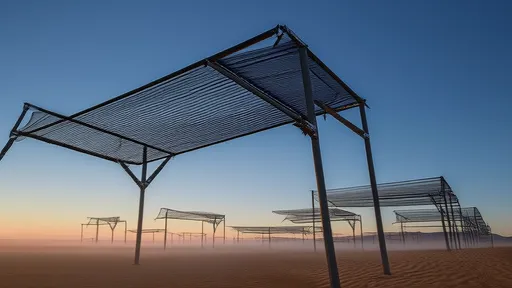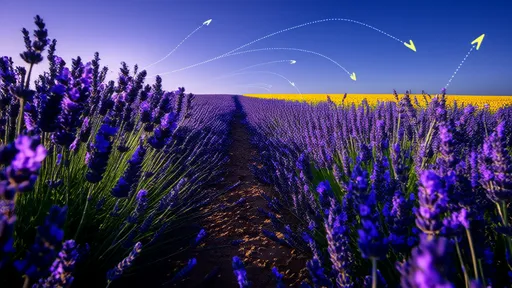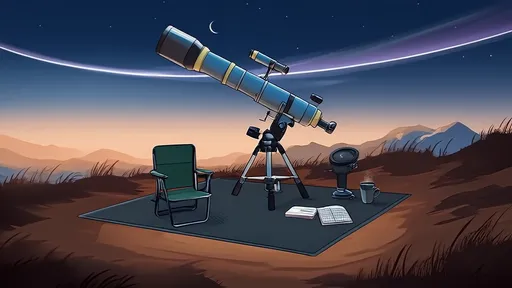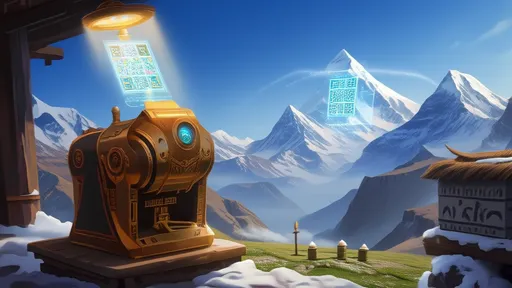The celestial ballet of a total solar eclipse creates one of nature's most breathtaking phenomena, where day momentarily turns to night and the sun's corona emerges in all its glory. For dedicated eclipse chasers, understanding the intricate dance of the moon's shadow across Earth's surface becomes paramount. The concept of shadow bands – those elusive, rippling patterns of light that race across the ground moments before totality – adds another layer of mystique to the experience. This guide delves into the art and science of positioning yourself optimally within the path of totality to witness these fleeting wonders.
Shadow bands represent one of the most enigmatic aspects of solar eclipses. These shimmering, snake-like lines of alternating light and dark appear on plain-colored surfaces about one to two minutes before and after totality. Caused by atmospheric turbulence distorting the last slivers of sunlight, they move with startling speed – some observers report them traveling at nearly 30 mph. Traditional eclipse viewing often focuses on looking upward, but the true shadow band hunter must become equally attentive to the ground beneath their feet.
The geometry of the moon's shadow creates what experienced chasers call the sweet spot phenomenon. As the umbral shadow approaches at over 1,000 mph near the equator (slowing to about 1,500 mph at higher latitudes), its shape transforms from nearly circular at the centerline to increasingly elongated near the edges. This distortion affects how shadow bands manifest, with the most dramatic displays typically occurring about halfway between the centerline and the northern or southern limits of totality.
Seasoned eclipse observers have developed specific techniques for shadow band detection. The ideal setup involves light-colored, smooth surfaces – many chasers bring portable white tarps or sheets. Positioning these perpendicular to the approaching shadow's path enhances visibility. Some veteran groups even employ specialized equipment like high-frame-rate cameras mounted parallel to the ground, though the naked eye often proves surprisingly effective when conditions align.
Atmospheric conditions play a crucial role in shadow band visibility. While clear skies are essential for viewing the eclipse itself, a certain amount of high-altitude turbulence actually improves shadow band contrast. The most spectacular displays frequently occur when cirrus clouds are present at about 20,000-30,000 feet, acting as a diffusing screen that accentuates the patterns. This creates a fascinating paradox – conditions that might slightly diminish the corona's visibility could simultaneously enhance the ground-level shadow band show.
The temporal aspect of shadow band observation requires precise timing. Unlike the eclipse phases that unfold with astronomical predictability, shadow bands appear during a brief, dynamic window. Experienced chasers begin ground observations about five minutes before totality, watching for the first ripples that signal the approaching spectacle. The bands typically become most pronounced about 90 seconds before totality, then vanish abruptly as the sun's disk becomes completely obscured.
Location selection for shadow band hunting involves several competing factors. While the centerline offers the longest duration of totality, some chasers deliberately position themselves about 60-70% toward the edge of the umbral path. This sacrifices some totality time but often provides more dramatic shadow band effects. The terrain also matters significantly – open fields, parking lots, or beaches typically outperform forested or uneven terrain where surface irregularities can obscure the delicate patterns.
Historical accounts reveal how shadow band observation has evolved. Early eclipse reports often mentioned these mysterious ground shadows, sometimes attributing them to supernatural causes. Modern understanding dates to the early 20th century when scientists first connected the phenomenon to atmospheric refraction. Today's eclipse chasers benefit from generations of accumulated knowledge, with online communities sharing real-time shadow band forecasts based on weather models and atmospheric data.
The psychological aspect of shadow band chasing shouldn't be underestimated. In the frenetic minutes before totality, when most observers are frantically checking equipment and eye protection, shadow band hunters must maintain intense focus on the ground. This creates a unique observational experience – where others see only anticipation, the trained eye discerns the first whispers of the approaching cosmic shadow. Many veteran chasers describe this as a form of eclipse meditation, connecting them more deeply to the celestial mechanics unfolding overhead.
Photographing shadow bands presents unique challenges. Unlike the eclipse itself which requires telescopic lenses, shadow band documentation benefits from wide-angle shots that capture both the patterns and their context. Exposure settings need constant adjustment as light levels change rapidly. Some successful techniques involve setting cameras to burst mode with exposure bracketing during the critical two-minute window, though many photographers find that abandoning the camera to experience the phenomenon directly yields greater personal rewards.
Safety considerations for shadow band observation differ from standard eclipse viewing. While the bands themselves pose no risk, the intense focus on ground observation requires extra vigilance about when to stop looking down and don eclipse glasses as the sun re-emerges. Many experienced groups designate a "shadow band spotter" who monitors safety timing while others concentrate on observation. This teamwork approach maximizes both the scientific and experiential aspects of the chase.
The future of shadow band research holds exciting possibilities. Citizen science initiatives now encourage observers to submit detailed reports that help refine predictive models. Some researchers speculate that advanced atmospheric monitoring might eventually allow reasonably accurate shadow band forecasts days before an eclipse. For now, the phenomenon remains delightfully unpredictable – a final cosmic tease before the main event that keeps eclipse chasers returning to the path of totality, eyes alternating between sky and ground, chasing the moon's fleeting shadow in all its manifestations.

By /Jul 16, 2025

By /Jul 16, 2025

By /Jul 16, 2025

By /Jul 16, 2025

By /Jul 16, 2025

By /Jul 16, 2025

By /Jul 16, 2025

By /Jul 16, 2025

By /Jul 16, 2025

By /Jul 16, 2025

By /Jul 16, 2025

By /Jul 16, 2025

By /Jul 16, 2025

By /Jul 16, 2025

By /Jul 16, 2025

By /Jul 16, 2025

By /Jul 16, 2025

By /Jul 16, 2025